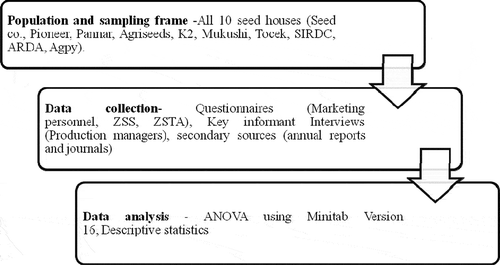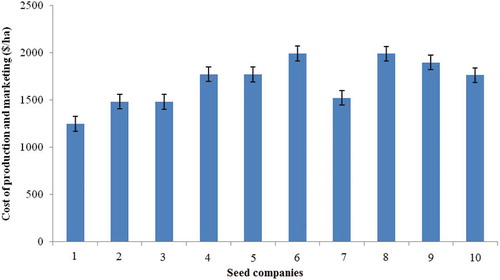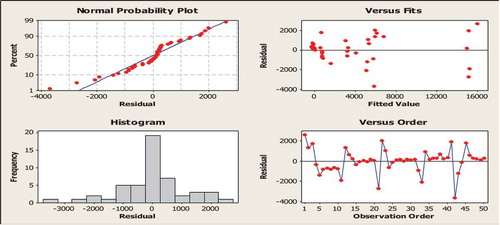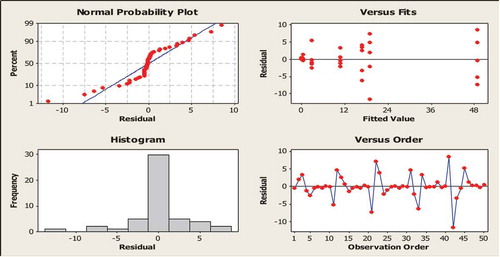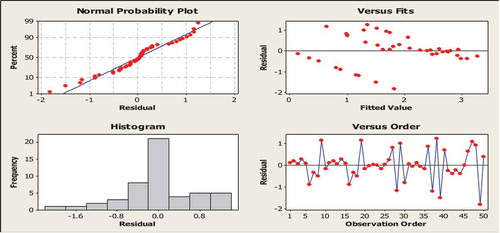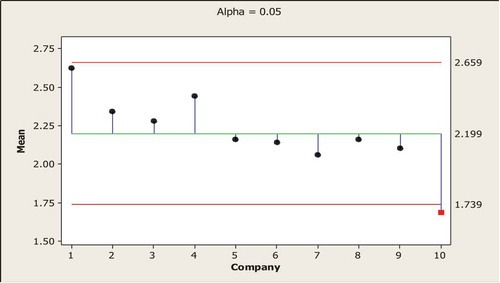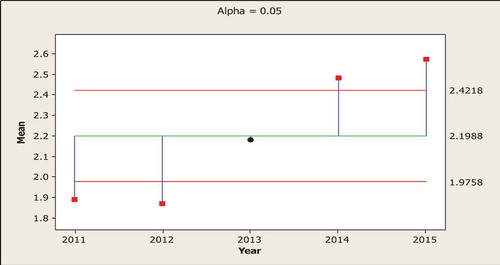Abstract
High cost of hybrid seed can affect food self-sufficiency. A study was conducted to investigate the structure, conduct and performance of the hybrid maize seed industry in Zimbabwe to determine whether the level of competition in the industry caused high and unstable prices. Primary data on the quantity of hybrid maize produced and/or marketed, pricing strategies and hybrid maize seed prices for the period 2011 to 2015 was collected using questionnaires administered to marketing managers of 10 seed houses involved in hybrid maize seed production and marketing in Zimbabwe as well as key stakeholders. The questionnaires were also used as interview guides for key informant interviews with production managers of respective seed houses. Secondary data were obtained from annual reports and technical bulletins of respective companies. The analysis involved respondent triangulation as well as triangulating the data from responses with secondary data in order to increase the convergent validity of the data. Descriptive statistics, ANOVA and trend analysis were used for data analysis. Results indicated that the hybrid maize seed industry in Zimbabwe is highly concentrated meaning that there is low competition. The study established that there may be tacit collusion in the pricing of hybrid maize seed in the form of dominant firm price leadership. The study showed that prices have not been stable for the period 2011 to 2015. It is recommended that the government should enact policies that; prohibit abuse of a dominant position, prohibit mergers which create or strengthen a dominant position and prohibit state aid that creates monopolies.
PUBLIC INTEREST STATEMENT
Hybrid seed often performs better than open-pollinated and farmer varieties in terms of tolerance to insect pests, weeds, diseases, drought, lodging. It is also associated with higher yields compared to open-pollinated and farmer varieties. For a country to achieve food self-sufficiency, availability and affordability of the seed to all farmers, whether small scale or large scale, is therefore critical. We hypothesised that competition among hybrid seed producers (seed companies) can affect pricing of the seed as well as stability of prices. The study outlined in this paper, therefore, examined how the hybrid maize seed industry in Zimbabwe is structured. Its conduct and performance were also explored. A key finding from the study was that the prices of hybrid maize seed were not stable from 2011 to 2015. The study also revealed that there was low competition, a situation allowing some companies to dominate the industry.
1. Introduction
Maize production is every household’s main cropping activity and is grown in all regions of Zimbabwe (FAO, Citation2011). Farmers in very marginal rainfall areas will attempt to grow maize despite previous failures of such attempts clearly depicting the relative importance of the crop (Cutts & Hassen, Citation2003). According to AGRITEX (Agritex, Citation2012), the Zimbabwean agricultural sector is largely characterised by small-scale farming and low productivity. This low productivity is partly due to the limited use of hybrid maize varieties and associated technologies (FAO, Citation2012).
The importance of hybrid maize seed is widely acknowledged (Olaf, Kassie, & Mwangi, Citation2011). Enhanced maize productivity can be achieved by increased use of modern production techniques such as the adoption of hybrid maize varieties (Langyintuo, Citation2005). Earlier, Thijssen, Bishaw, Beshir, and de Boef (Citation2008) made the same proposition when they said that access to and use of hybrid maize seed are critical factors for the ability of smallholder farmers to increase agricultural production and productivity, ensuring food security and improving livelihoods. Mujaju and Jonga (Citation2014) highlighted that a competitive seed sector is key to ensuring timely availability of appropriate, high-quality hybrid maize seed at affordable prices to smallholder farmers in Zimbabwe in order to increase productivity. According to Alemu, Rashid, and Tripp (Citation2010), hybrid maize seed plays a critical role in achieving the endeavour towards agricultural intensification. Chikobvu, Chiputwa, Langyintuo, Rovere, and Mwangi (Citation2010) attributed the tripling in smallholder maize production in Zimbabwe that occurred from 1980 to 1988 to an increase in the use of hybrid maize seeds from about 40% in 1979 to 98% by 1985 among other factors. Despite the availability of such empirical evidence, more than 20% of Zimbabwean smallholder farmers are using either retained or open pollinated maize seed and this figure is rising (Magiya, Citation2015; World Bank, Citation2015).
The influence of price on hybrid maize seed adoption by smallholder farmers in Zimbabwe is well-recognised. According to the World Bank (Citation2013) most smallholder farmers who are the actual users of hybrid maize seed are resource poor and fail to access seed owing to the high cost of the seed which is beyond their reach. Other studies (Chikobvu et al., Citation2010; Kassie et al., Citation2012; Langyintuo, Citation2005) document that Zimbabwean smallholder farmers are failing to afford hybrid maize seed but do not point to the causes for the high prices. It is possible that smallholder farmers fail to access hybrid seed because the companies selling the seed have increased their prices due to the obvious benefits of these hybrid seeds compared to normal seeds, and because the government encouraged farmers to use them due to their benefits. This study, therefore, sought to investigate the structure, conduct and performance of the hybrid maize seed industry in Zimbabwe to determine the likely causes of the high prices of hybrid maize seed which may be causing low and declining usage of hybrid maize seed.
Despite the well-recognised benefits of hybrid maize seed such as high yields, drought tolerance and disease tolerance, the World Bank (Citation2015), Magiya (Citation2015) and Chikobvu et al. (Citation2010) observed that the use of retained and open pollinated maize seed by Zimbabwean smallholder farmers is on the increase owing to the high prices of the seed. Specifically, the World Bank (Citation2015) estimates that more than 20% of Zimbabwean smallholder farmers are using either retained maize seed or open pollinated maize varieties and this is corroborated by Magiya (Citation2015) in the Zimbabwe national seed assessment report. This could be the reason for the low average national maize yields which are currently below 0.9t/ha (Agritex, Citation2015). There was, therefore, need for an investigation on the structure, conduct and performance of the hybrid maize seed industry in Zimbabwe to determine if the high cost of hybrid maize seed is a consequence of the structure and conduct of the industry.
This study provides an understanding of whether the level of market competition in the hybrid maize seed industry in Zimbabwe affects the pricing of hybrid maize seed. This would assist policymakers to determine the most appropriate levels of government intervention that may effectively enhance the use of hybrid maize seed especially by smallholder farmers. The main objective of the study was to investigate the level of market competition by firms in the hybrid maize seed industry in Zimbabwe and whether this was causing the high prices of the seed. The study also sought to determine the market concentration of the hybrid maize seed industry in Zimbabwe, determine whether there is collusion by seed houses in pricing hybrid maize seed in Zimbabwe and to establish whether hybrid maize seed prices in Zimbabwe have been stable for the past 5 years (2010–2015).
Questions for which the study sought answers included: What is the market concentration of the hybrid seed maize industry in Zimbabwe? Is there collusion in the pricing of hybrid maize seed in Zimbabwe? Have prices of hybrid maize seed been stable over time (2010–2015)? The study assumed that: There may be a high market concentration in the hybrid maize seed industry in Zimbabwe; seed houses could be colluding in the pricing of hybrid maize seed in Zimbabwe, the hybrid maize seed prices in Zimbabwe may have not been stable for the past 5 years (2010–2015).
2. Materials and methods
2.1. Description of seed houses
Zimbabwe had 10 seed houses that marketed hybrid maize seed during the period of study (2011 to 2015). These were Seed Co Zimbabwe, Pannar, Agriseeds, Agpy, Torcek, Klein Karoo (K2), ARDA Seeds, SIRDC, Pioneer Hi-bred and Mukushi Seeds. Seed Co Zimbabwe has local ownership apart from having institutional investors such as Old Mutual and being in a strategic alliance with one of the biggest vegetable seeds company in the world called Limagren. Pioneer Hi-bred is owned by DuPont, an American company which is now merged with Pannar, another private company in the hybrid maize seed industry in Zimbabwe. Other key players include Agriseeds and Klein Karoo which have private local ownership for Progene and foreign ownership for K2. The rest of the companies which make up the hybrid maize seed industry in Zimbabwe are: ARDA Seeds, Torcek, Agpy, Mukushi Seeds and SIRDC, which are locally owned. All these seed houses are found within a 50 km radius around Harare. Harare is the capital city of Zimbabwe and falls under the agroecological region IIb. (agro-ecological regions are demarcations based on the region’s rainfall regime, soil quality, type of vegetation. Region IIb receives good rains and is highly suitable for agriculture.) Its topography is 1,483 m above sea level and receives an average annual rainfall of about 825 mm of rainfall.
2.2. Research design
In carrying out the research, the flow diagram summarised in Figure was followed.
The research used the survey research design. The sampling frame was the entire population comprising the 10 seed houses that produced and/or marketed hybrid maize seed in Zimbabwe during the study period (2011–2015) (names of seedhouses withheld). Questionnaires and key informant interviews were used to collect primary data. Three questionnaires were pilot tested to establish whether the respondents were comfortable with answering the questions and whether the questions were valid for the purposes of the research.
Twelve structured questionnaires were administered one for each marketing person from each seed house and one each for Zimbabwe Seed Services (ZSS) and Zimbabwe Seed Traders Association (ZSTA), respectively, for the purpose of triangulation. The main variables of interest on each questionnaire included the quantity of hybrid maize produced and/or marketed; pricing strategies and hybrid maize seed prices for the period 2011 to 2015. All questionnaires addressed the issue of how companies set their prices. Firms were first asked to indicate whether they have an independent price-setting policy or whether their price is either regulated or set by the main company of the same group or dictated by the main competitor. Firms with an independent policy were then asked to specify whether their price is set as a margin (markup) on costs, whether it depends on the price of their main competitor(s), or whether it is set according to other strategies. For each target, respondent questions were asked but not limited to the questionnaire.
In addition to these questionnaires, 12 key informants were also interviewed and these were mainly the production managers or senior staff in the production department of these companies. The same questionnaires were used as interview guides for the purpose of confirmation. Thus, the analysis involved respondent triangulation as well as triangulating the data from responses with secondary data in order to increase the convergent validity of the data. Triangulation was defined by Saunders, Lewis, and Thornhill (Citation2003) as the use of different instruments within one study to test the consistency of findings. Secondary data such as sales volumes and selling prices were obtained from respective seed houses’ annual reports, government reports, research journals and magazines. The analytical framework that was used in the study is presented in Table .
Table 1. Analytical framework
2.3. Data analysis
Data were analysed using Minitab version 16. It was first tested for compliance with the assumptions of parametric statistics to determine the applicability of ANOVA. The relative market share of each company was determined from the quantity of hybrid maize seed marketed by each company and subtracting its exports. The market share data were then used to calculate the Concentration Ratio and Her Findahl Hirschman Index to determine the market structure. To determine the possibility of collusion, data on pricing policies by each company are presented in the form of a frequency table and bar graph. Additionally, One-way Normal ANOM (in ANOVA) by price analysis was done at 95% confidence interval to find out if there were significant differences in the mean prices charged by each company despite the companies having very different cost structures. ANOM plots have a centre line and decision limits given a particular confidence interval. If a point fell outside the decision limits, then there was significant evidence that the mean represented by that point was different from the grand mean. If a point fell within the decision limits this indicated that statistically there was no difference in means at that particular confidence interval. This result was then compared with the costs of production for each firm to determine the likelihood of collusion. A line plot of mean price by company for the period 2011–2015 was used to determine price stability. This line plot indicates the general trend in prices for the period 2011 to 2015. The data were further subjected to One-way Normal ANOM for an annual price (2011–2015) again at 95% confidence interval to determine if they were statistically different.
3. Results and discussion
The data were tested for normality and it was observed that it followed a normal distribution and therefore ANOVA was applicable. The results and discussion on market concentration, collusion and price stability are presented below.
3.1. Zimbabwe hybrid maize seed industry concentration
The percentages of market share for the 10 companies from 2011 to 2015 are shown in Table .
Table 2. Percentage market share by each company over time
The market share data presented in Table were used to compute the Concentration Ratio and the Her Findahl Hirschman Index as shown in Table .
Table 3. Concentration ratio and her Findahl Hirschman Index
The results above indicate the percentage of market share owned by the top four companies in the hybrid maize seed industry in Zimbabwe for each year from 2011 to 2015. The results generally indicate that there was high market concentration in the industry for all the years from 2011 to 2015 which implies that these top four companies had a high degree of market power and could influence prices. According to Porter (Citation2008a), a 4 firm Concentration Ratio above 60% indicates high market concentration. However, Bosena, Bekabil, Berhanu, and Dirk (Citation2011) noted that concentration ratio cannot be sufficiently used on its own to determine the market concentration in an industry; hence the Her Findahl Hirschman Index was computed to capture the distribution of market shares for every company.
According to Porter (Citation2008b), when the Her Findahl Hirschman Index is above 2000 an industry is highly concentrated and therefore less competitive. The Her Findahl Hirschman Index for the hybrid maize seed industry in Zimbabwe is above 2000 in all the years from 2011 to 2015. This indicates high industry or market concentration which is consistent with the result of the Concentration Ratio and confirms that the hybrid maize seed industry in Zimbabwe is highly concentrated. As highlighted by Thomas and Maurice (Citation2011), this could push prices up as a few companies have a high degree of market power. A recent study that was carried out by Mujaju and Jonga (Citation2014) found the Her Findahl Hirschman Index for the maize seed industry in Zimbabwe to be 2734 in 2014. This difference with the result of this study is due to the fact that they used market share data for all classes of maize seed whereas this research specifically used market share data for hybrid maize seed. However, their index also indicated high concentration in the maize seed industry in Zimbabwe.
3.2. Determination of collusion
Table illustrates the responses obtained for the way firms set their prices. It is important to remark that 80% share of firms setting their price according to those of their main competitor is quite significant.
Table 4. Firm price-setting strategies
In addition, an analysis of mean prices (at 95% confidence interval) of all companies (ANOM) per year was used. In Figure in Appendix , the points representing the mean prices of 9 out of 10 companies indicated that there are no significant differences in mean prices from the grand mean at 5% level of significance. Abrantes-Metz, Froeb, Geweke, and Taylor (Citation2006), Bolotova, Connor, and Miller (Citation2008), Blanckenburg and Geist (Citation2011) employed the same approach by calculating the mean and variances of prices in detecting collusive behaviour of firms.
This study went on further to determine the production and marketing cost differences among the different companies. These are presented in Figure .
The costs of production and marketing for the different companies show significant differences at 5% level of significance. This indicates that they have very different production and marketing costs as shown in Figure . Company 1 enjoys economies of scale and has the lowest costs yet it has the highest average prices of hybrid maize seed.
Average hybrid maize seed prices for 9 out of 10 companies are not significantly different at 5% level of significance despite the companies having very different costs. From these results, it may be inferred that there could be tacit collusion in pricing of hybrid maize seed in the form of dominant firm price leadership where one firm announces new prices and other firms follow, a phenomenon known as “Stackleberg behaviour”, which leads to a Stackleberg equilibrium (Bolotova et al., Citation2008). Blanckenburg and Geist (Citation2011) focused on mean and variance of prices in detecting collusive conduct. Their findings, although they managed to determine collusion, did not compare differences in production and marketing costs.
3.3. Price stability
Figure shows the price instabilities for specific seed companies over time. Company 10 was generally stable in pricing pattern over time, possibly because it has been in the seed industry for a longer period of time than other companies, allowing farmers to prefer its seed than seed from other companies. The company could also be involved in seed production of different crops, allowing sales from other crop seeds to cushion the price of maize. Most of the companies recorded a general increase in pricing from 2011 to 2015. The pattern of price increases for all the companies appears to be the same.
The trend differences or patterns were further tested for statistical significance using the analysis of variance as shown in the ANOM plot in Figure in Appendix . As indicated by the red asterisks, annual prices were significantly different from the grand mean. This suggests that at 95% confidence interval, the hybrid maize seed prices were not stable over the 5-year period from 2011 to 2015. This is further presented in Figure .
As shown in Figure , there are significant differences in prices from 2011 to 2015. This indicates that the hybrid maize seed prices were not stable for the period studied, which resonates with the global trend. Raaj (Citation2006) highlighted that when industry or market concentration is high, it results in unstable prices. Price stability is a measure of market efficiency and when prices are not stable, it shows market inefficiency (Milagrosa, Citation2007). According to Giroh, Umar, and Yakub (Citation2010), an efficient market has stable prices and will establish prices that are interrelated through space by transportation costs, through time by costs of storage, and through form by costs of processing. Zimbabwe seed industry prices are the same across settings.
4. Conclusions
This research established that the hybrid maize seed industry in Zimbabwe is highly concentrated (there is little competition) since the HHI is above 2000 in all instances. This means that there are some firms that have a high degree of market power and could influence prices. High concentration causes divergences which do not generate competitive prices that reflect social opportunity costs and lead to an efficient allocation of products or factors. Consequently, this may have resulted in the low and declining levels of usage of hybrid maize seed thereby causing productivity of maize to be low. In terms of conduct, the research inferred that there could be tacit collusion in the pricing of hybrid maize seed in Zimbabwe. This may be in the form of dominant firm price leadership whereby the dominant firm in the market announces prices and the rest of the companies follow. Hybrid maize seed prices have been observed to have been unstable for the 5-year period from 2011 to 2015 in Zimbabwe. This could be attributed to the lack of competitiveness and the likelihood of tacit collusion in pricing. These results are therefore consistent with the proposition of the structure-conduct-perfomance paradigm that when industry concentration is high, companies may collude resulting in high and unstable prices.
5. Recommendations
Given the results obtained in this study, it is recommended that the Government of Zimbabwe should intervene through a competition policy in the hybrid maize seed industry. This should prohibit anti-competitive behaviour such as mergers that promote the dominant position of firms, prohibit the abuse of a dominant position and prohibit state aid that creates monopolies. The Zimbabwe Seed Services as the regulating body should also relax the requirements for operating a seed house to enhance competition. It is further recommended that the government should adopt the seed subsidy policy to enhance the usage of hybrid maize seed by smallholder farmers.
6. Suggested areas for further studies
The researchers suggest that more work be done by identifying all the structure-conduct-performance variables in the hybrid maize seed industry to present a holistic view of the driving forces within the industry, by indicating how the variables interrelate and influence each other.
Additional information
Funding
Notes on contributors
Handsen Tibugari
Handsen Tibugari is a lecturer at Gwanda State University. He is working on potential utilisation of sorghum allelopathy for weed management for his PhD. He has published a number of articles related to crop production and crop protection.
Tinei Chikasha
Tinei Chikasha is a Seed Production Agronomist/Inspector at SeedCo and his research interests are in agribusiness development. Prior to moving to Seed Co, he worked as an Agronomist at Klein Karoo Seed Marketing Zimbabwe.
Ngonidzaishe Manyeruke
Ngonidzaishe Manyeruke is an agronomist at the Tobacco Industry and Marketing Board in Chinhoyi.
Ndabanye Mathema
Ndabanye Mathema, Joseph P. Musara, Rangarirai Mapuranga, Dumisa Dlamini, Olga Mapanje, Annabel Banda are all lecturers at Gwanda State University. They are all at different levels of their PhD researches in Crop Science related disciplines.
Cosmas Parwada
Cosmas Parwada is a soil scientist and senior lecturer at the Women’s University in Africa.
References
- Abrantes-Metz, R. M., Froeb, L., Geweke, M. J., & Taylor, C. T. (2006). A variance screen for collusion. International Journal of Industrial Organization, 24, 467–13.
- Agritex. (2012). Strategic plan for the department of agricultural, technical and extension services (AGRITEX) for the period 2012–2015. Zimbabwe: MoAMID, Harare.
- Agritex. (2015). Annual report. Zimbabwe: Author.
- Alemu, D., Rashid, S., & Tripp, R. (2010). Seed system potential in Ethiopia: Constraints and opportunities for enhancing the system. Washington DC: IFPRI.
- Blanckenburg, K. V., & Geist, A. (2011). Detecting illegal activities: The case of cartels. European Journal of Law and Economics, 32, 15–33.
- Bolotova, Y., Connor, J. M., & Miller, D. J. (2008). The impact of collusion on price behaviour: Empirical results from two recent cases. International Journal of Industrial Organization, 26, 1290–1307.
- Bosena, D. T., Bekabil, F., Berhanu, G., & Dirk, H. (2011). Structure-conduct-performance of cotton market: The case of Metema District, Ethiopia. Journal of Agriculture, Biotechnology & Ecology, 4(1), 1–12.
- Chikobvu, S., Chiputwa, B., Langyintuo, A., Rovere, R. L., & Mwangi, W. (2010). Characterisation of maize producing households in Masvingo and Bikita Districts in Zimbabwe. Nairobi, Kenya: CIMMYT.
- Cutts, M., & Hassen, R. (2003). An econometric model of the SADC maize sector. Paper presented at the 41st Annual Conference of the Agricultural Economic Association of South Africa (AEASA), Pretoria, South Africa. https://ageconsearch.umn.edu/bitstream/19075/1/cp03cu01.pdf
- FAO. (2012). FAOSTAT, food supply. http://www.faostat.fao.org/site/345/default.aspx. doi:10.1094/PDIS-11-11-0999-PDN
- Food and Agriculture Organisation of the United Nations. (2011). FAOSTAT-FAO Statistical Databases. (Online) http://faostat.fao.org
- Giroh, D. Y., Umar, H. Y., & Yakub, W. (2010). Structure, conduct and performance of farm gate marketing of natural rubber in edo and delta states, Nigeria. African Journal of Agricultural Research, 5(14), 1780–1783.
- Kassie, G. T., Erenstein, O., Mwangi, W., LaRovere, R., Setimela, P., & Langyintuo, A. (2012) Characterisation of maize production in Southern Africa: Synthesis of CIMMYT/ DTMA household level farming system surveys in Angola, Malawi, Mozambique, Zambia and Zimbabwe. Socio-Economics Program Working Paper 4. Mexico, D.F.: CIMMYT. doi:10.1094/PDIS-11-11-0999-PDN
- Langyintuo, A. (2005). Analysis of the Maize Seed Sector in South Africa: Paper presented at a Rockefeller foundation workshop on Biotechnology, Breeding and Seed systems for Africa Crops. Nigeria.
- Magiya, B. (2015). Zimbabwe Seed Market Assessment National Report for Klein Karoo. Zimbabwe.
- Milagrosa, A. (2007). Institutional Economic Analysis of Vegetable Production and Marketing in Northern Philippines: Social Capital, Institutions and Governance. Ph.D. Thesis. Wageningen University. doi:10.1094/PDIS-91-4-0467B
- Mujaju, C., & Jonga, M. (2014). The African Seed Access Index Country Report on Zimbabwe.
- Olaf, E., Kassie, G., & Mwangi, W. (2011). Challenges and opportunities for maize seed sector development in eastern Africa. Ethiopia: International Maize and Wheat Improvement Center (CIMMYT), Addis Ababa.
- Porter, M. (2008a). The five competitive forces that shape strategy. Harvard Business Review, January 2008. 24–41.
- Porter, R. H. (2008b). Detecting collusion. Review of Industrial Organization, 26, 147–167.
- Raaj, K. (2006). The structure-conduct-performance paradigm. New Delhi: College of Vocational Studies, Delhi University.
- Saunders, M., Lewis, P., & Thornhill, A. (2003). Research Methods for Business Students.
- Thijssen, M. H., Bishaw, Z., Beshir, A., & de Boef, W. S., (Eds.). (2008). Farmers, seeds and varieties: Supporting informal seed supply in Ethiopia. (pp. 348). Wageningen: Wageningen International.
- Thomas, C. R., & Maurice, S. C. (2011). Managerial economics: Foundations of business analysis and strategy (10th ed.). New York: John Wiley and Sons.
- World Bank. (2013). Countries and economies. http://data.worldbank.org/country
- World Bank. (2015). Agricultural Sector Assessment Study, Final Report, Zimbabwe Multi Donor Trust Fund [email protected]
Appendix 1: Research Results
The following Figures 1, 2 and 3 show that the three variables, namely quantity of seed produced in metric tonnes (mt); price; and % market share of each house are approximately normally distributed.

